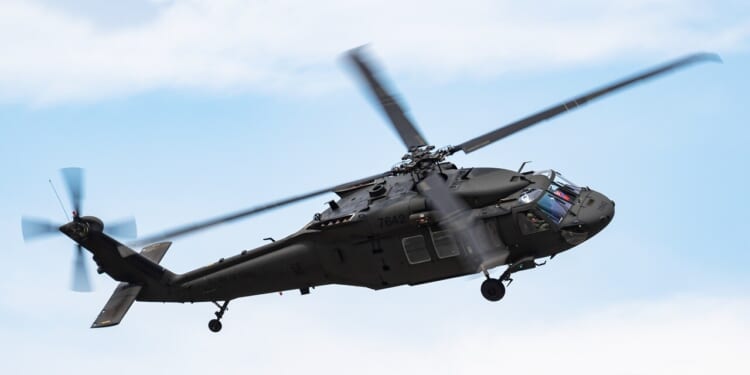The Black Hawk is inherently more dangerous to fly than a civilian helicopter because of its design. But sending it on dangerous missions does not help.
The Sikorsky UH-60 Black Hawk is one of the most recognizable helicopters in the world. First entering service with the US Army in 1979, the Black Hawk has been central to US air mobility in every major military operation since—including Panama, the Gulf War, Somalia, Iraq, and Afghanistan. The platform is fast, rugged, and versatile—with the ability to haul troops, sling artillery, or provide medical evacuations under fire.
Yet despite proving itself as a workhorse, the Black Hawk has earned a darker nickname: “Crash Hawk.” Over decades, the Black Hawk has suffered a series of high-profile accidents, raising questions about its design, handling, and safety record.
The UH-60 Black Hawk’s Specifications
- Year Introduced: 1979
- Number Built: 4,000+ (across all variants; still in production)
- Length: 64.8 ft (19.76 m)
- Rotor Diameter: 53.8 ft (16.4 m) main rotor
- Weight: ~22,000 lb (9,980 kg) MTOW
- Engines: Two General Electric T700 turboshafts (~1,890-2,000 shp each, depending on variant)
- Top Speed: ~183 knots (211 mph, 340 km/h)
- Range: ~320 nmi (370 mi, 590 km) without refueling; ferry range ~1,380 nmi with tanks
- Service Ceiling: ~19,000 ft (5,800 m)
- Loadout / Capacity: 11 fully equipped soldiers or 6 stretchers for medevac; up to ~9,000 lb (4,100 kg) sling load; can be fitted with door guns; optional stub wings for rockets/missiles on armed variants
- Aircrew: Typically 4 (2 pilots + 2 crew chiefs/gunners)
The UH-60 Black Hawk Came with Design Compromises
Helicopters are inherently far more dangerous than fixed wing aircraft. Helicopter pilots fly low and slow to the ground in a platform that is inherently un-airworthy—and, indeed, would fall from the sky in an instant should the power source fail. All different varieties of helicopter types suffer accidents, predictably, and the Black Hawk is no different. And thanks to the sheer size of the fleet, with over 4,000 built, and the constant deployment into hazardous conditions, the Black Hawk’s raw number of incidents becomes almost expected.
But part of the danger does come from facets of the Black Hawk’s design. To meet the Army’s need for speed and agility, the Black Hawk was built with a relatively small rotor relative to its weight. The result is a helicopter with excellent maneuverability, with the ability to dart into tight landing zones, but with miniscule aerodynamic margin for error. The Black Hawk requires constant attention at the controls, especially during low-level maneuvering. And in certain conditions, like high-altitude or high-temperature environments, the margin between safe flight and blade stall can be razor-thin.
The Black Hawk also uses a four-blade main rotor feeding into a complex gearbox. Failures in the transmission and rotor system have been implicated in several Black Hawk crashes. Part of the problem is a lack of redundancy and vibration control; while the Black Hawk’s design met the necessary standards in the 1970s, if the systems were built today, they would surely incorporate redundancies so that a single point of failure could not cascade into an unrecoverable situation.
Is the “Crash Hawk” Label Unfair?
Part of the Black Hawk’s problem is inherent to the way she is used. Often tasked with flying low-level, earth-hugging routes to avoid radar and enemy fire, the Black Hawk is frequently exposed to wires, towers, and small arms fire. Any helicopter asked to operate in such conditions would experience failures far more than a conventional civilian helicopter would.
Yet the Crash Hawk label persists. No doubt in some part thanks to several high-profile incidents. During the Battle of Mogadishu, two Black Hawks were shot down, an incident that journalist Mark Bowden would later write about in the best-selling book Black Hawk Down, which Ridley Scott adapted into a famous Hollywood feature film. More recently, a Black Hawk navigating the Potomac River collided with a commercial jet inbound for Reagan Airport, killing all involved.
Ultimately, however, the Black Hawk’s reputation is less about a single design defect, but instead a reflection on the realities of operating a helicopter at the edge of its flight envelope, in wartime conditions, for many decades.
About the Author: Harrison Kass
Harrison Kass is a senior defense and national security writer at The National Interest. Kass is an attorney and former political candidate who joined the US Air Force as a pilot trainee before being medically discharged. He focuses on military strategy, aerospace, and global security affairs. He holds a JD from the University of Oregon and a master’s in Global Journalism and International Relations from NYU.
Image: Shutterstock / Soos Jozsef.

















